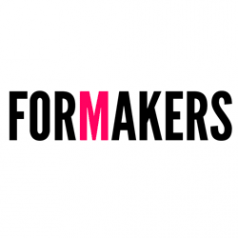06MAY 2013
 © USC School of Architecture The studio section taught by Roland Wahlroos-Ritter started with precedent studies of the primary building materials timber, masonry [brick], steel, concrete and glass. Shelley Fu and Vicky Wong, the students that designed the glass pavilion started with a precedent study of the glass pavilion in Toledo by SAANA. They translated their interest in structural glass, as well as it reflective and refractive qualities, into their first project design of a glass bench. Since they were unable to bend glass similar to the glass in Toledo, they became interested in origami techniques and folding glass.
© USC School of Architecture The studio section taught by Roland Wahlroos-Ritter started with precedent studies of the primary building materials timber, masonry [brick], steel, concrete and glass. Shelley Fu and Vicky Wong, the students that designed the glass pavilion started with a precedent study of the glass pavilion in Toledo by SAANA. They translated their interest in structural glass, as well as it reflective and refractive qualities, into their first project design of a glass bench. Since they were unable to bend glass similar to the glass in Toledo, they became interested in origami techniques and folding glass.
 © USC School of Architecture The design developed into a simple but elegant folded plate structure.
Through the discovery of the amazing structural abilities and seductive reflections of folded plates in their bench, they became more ambitious in their design for their second project. They explored various geometries in paper models and developed a number of detail solutions.
© USC School of Architecture The design developed into a simple but elegant folded plate structure.
Through the discovery of the amazing structural abilities and seductive reflections of folded plates in their bench, they became more ambitious in their design for their second project. They explored various geometries in paper models and developed a number of detail solutions.
 © USC School of Architecture At the end of the second project review all pavilion designs within the studio section were put up for a student vote to choose which design was going to get built by all students. The glass pavilion, by far the most ambitious and expensive, won the vote.
After the vote, the project design had to be re-strategized, since within the time constraints of only two weeks of design revisions, fabrication and installation it would have been impossible to be built in glass. So in this sense the project is seen as a 1:1 prototype for a future glass pavilion; to test the geometry, spatial qualities and fabrication process.
© USC School of Architecture At the end of the second project review all pavilion designs within the studio section were put up for a student vote to choose which design was going to get built by all students. The glass pavilion, by far the most ambitious and expensive, won the vote.
After the vote, the project design had to be re-strategized, since within the time constraints of only two weeks of design revisions, fabrication and installation it would have been impossible to be built in glass. So in this sense the project is seen as a 1:1 prototype for a future glass pavilion; to test the geometry, spatial qualities and fabrication process.
 © USC School of Architecture Thus glass was substituted for 6mm polycarbonate. In the process the overall geometry was refined, rhino scripts written to generate the folded plate geometry, and shop drawings developed to allow fabrication. The final design consisted of over 800 polycarbonate pieces fastened together with over 2500 zip ties. The prototype revealed unexpected moments in terms of structural behavior, especially of the two cantilevers at the end and it’s ability to transform the perception of the environment.
© USC School of Architecture Thus glass was substituted for 6mm polycarbonate. In the process the overall geometry was refined, rhino scripts written to generate the folded plate geometry, and shop drawings developed to allow fabrication. The final design consisted of over 800 polycarbonate pieces fastened together with over 2500 zip ties. The prototype revealed unexpected moments in terms of structural behavior, especially of the two cantilevers at the end and it’s ability to transform the perception of the environment.
 © USC School of Architecture.
© USC School of Architecture.
 © USC School of Architecture
© USC School of Architecture
 © USC School of Architecture
© USC School of Architecture
 © USC School of Architecture
© USC School of Architecture
 © USC School of Architecture
© USC School of Architecture
 © USC School of Architecture
© USC School of Architecture
Glass Pavilion / USC School of Architecture
Posted in Events_Interviews - Events_Interviews by * FORMAKERS
2b is the second year undergraduate studio at USC School of Architecture, and the studio agenda focuses on materials, their properties, limitations and effects. The process that led to the glass pavilion was a succession of exercises. © USC School of Architecture
© USC School of Architecture © USC School of Architecture
© USC School of Architecture © USC School of Architecture
© USC School of Architecture © USC School of Architecture
© USC School of Architecture © USC School of Architecture
© USC School of Architecture © USC School of Architecture
© USC School of Architecture
 © USC School of Architecture
© USC School of Architecture
 © USC School of Architecture
© USC School of Architecture
 © USC School of Architecture
© USC School of Architecture
 © USC School of Architecture
© USC School of Architecture
Comments
No comments
Sign in »




